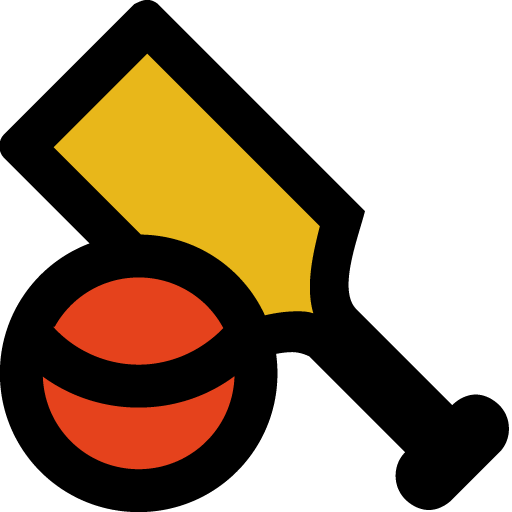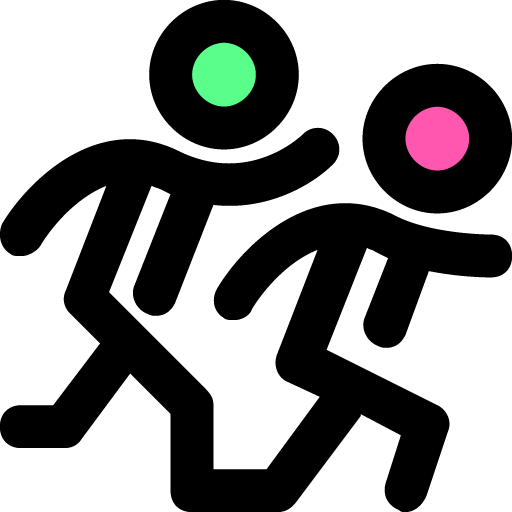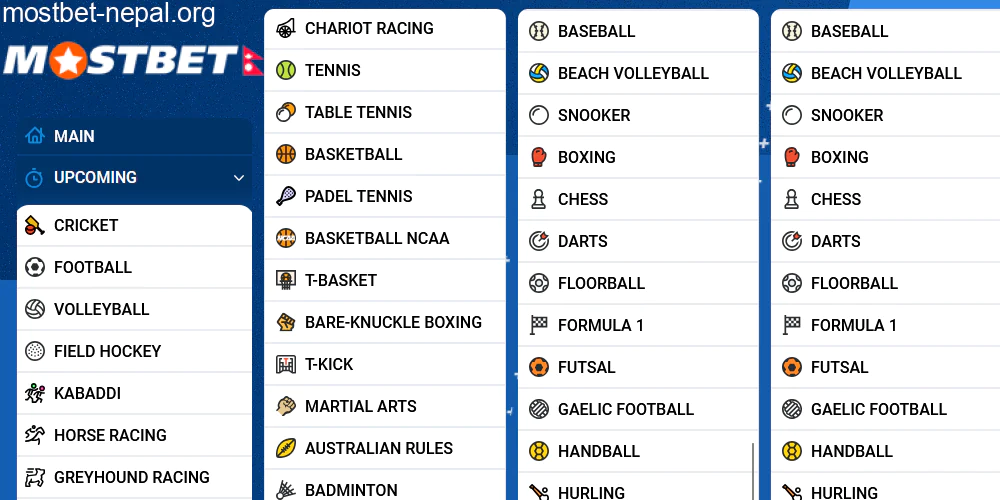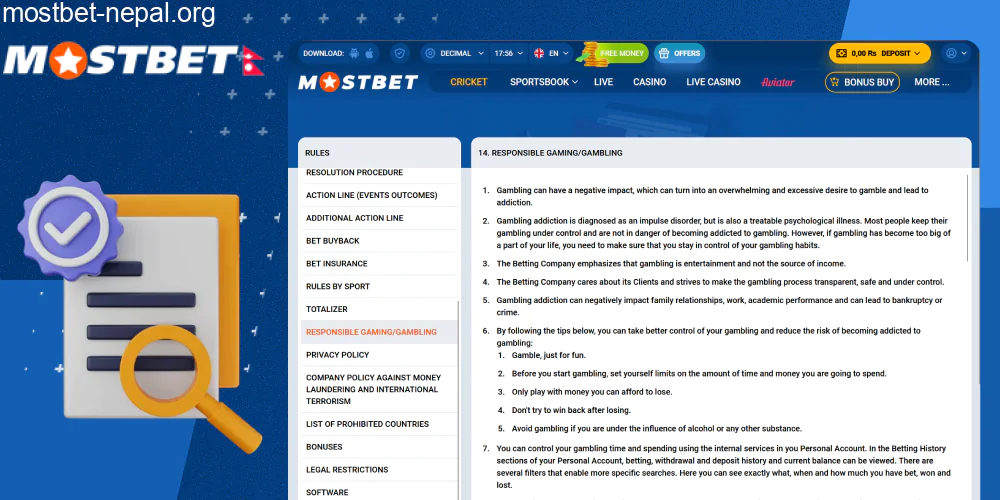Mostbet: Official Site of Casino and Sports Betting in Nepal

Mostbet is a proven and popular bookmaker and casino that delivers a first-class betting experience. We ensure maximum convenience with diverse payment options and the acceptance of Nepalese Rupees.
Don’t miss out: Every new player is eligible for an impressive welcome bonus of up to NPR 35,000!
Register with Mostbet Nepal, activate your bonus, and make your first bets in NPR!
Promo code +500%
XXXXXX
Sports categories
-
 Cricket
Cricket -
 Football
Football -
 Volleyball
Volleyball -
 Field Hockey
Field Hockey -
 Kabaddi
Kabaddi -
 Futsal
Futsal -
 Tennis
Tennis -
 Basketball
Basketball -
 Badminton
Badminton -
 Boxing
Boxing
About Mostbet Nepal

As a globally recognized leader in online betting and casino entertainment since 2009, Mostbet provides a secure and fair platform to players in Nepal and over 90 countries worldwide.
- Licensed & Secure: Operated under a robust Curacao eGaming license (No. 8048/JAZ2016-065).
- Global Reach, Local Support: The site supports English, Nepali, Hindi, and more than 20 other languages.
- Comprehensive Offerings: Explore an extensive range of options, including Sports Betting, thrilling Casino Games, Live Casino action, and competitive Esports Betting.
- Top-Tier Service: Benefit from reliable transaction tools, dedicated 24/7 customer support, and a modern, feature-rich mobile app.
| About Mostbet |
|
|---|---|
| Payments |
|
| Welcome bonus |
125% match bonus of up to NPR 35,000 |
| Services |
|
| Devices |
|
| Support |
|
Popular games in the Mostbet Casino app
Favourite slots
-

Aviator
-

Gates of Olympus
-

Mines
-

Spaceman
-

Sweet Bonanza
-

Sugar Rush
-

Plinko
-

Egypt Fire
-

777 Coins
-

Energy Coins
-

Wild Bounty Showdown
-

Coin Up
-

Football
-

Coin Volcano
Legal & Secure Betting in Nepal with Mostbet

Mostbet operates legally in Nepal, holding the international Curacao eGaming license (No. 8048/JAZ2016-065). This crucial licensing ensures that we provide authorized, legal services directly to Nepalese players.
Your safety is our priority. The sportsbook protects user data and transactions using advanced 256-bit SSL encryption and robust firewall protection. Furthermore, secure and reliable transaction tools, including IMEpay, eSewa, Bitcoin, and USDT, guarantee hassle-free and protected deposits and withdrawals.
Get Started: Mostbet Nepal Registration Guide

Registering at Mostbet Nepal is designed to be quick and user-friendly, getting you ready to bet within minutes. We offer several convenient sign-up options for Nepalese players: One-click, Phone, Email, or Social Media.
Your Step-by-Step Guide to Quick Betting:
- Go to the Official Website: Use your device’s browser to visit the official Mostbet site.
- Initiate Sign-Up: Locate and click the orange “Sign Up” button at the top right of the homepage.
- Choose Registration Type: Select one of the available methods: One-click, Phone Number, Email, or Social Media.
- Fill in Your Data: Provide the necessary information based on your selection (e.g., phone number, email, country, currency, and a secure password).
- Agree to Terms: Read and accept the Mostbet Rules by ticking the “Accept All” checkbox.
- Use a Promo Code: Enter your promotional code in the designated field to activate the full welcome bonus offer.
- Select Your Welcome Offer: Choose between the Sports Betting or Online Casino welcome package.
- Finalize Account: Click the final “Sign Up” button to complete the process.
You can now fund your account and start placing bets in Nepalese Rupees!
How to Verify an Account on Mostbet

Account verification is a crucial step at Mostbet, essential for maximizing your profile’s security and unlocking the ability to make withdrawals. The process is straightforward and can be completed in just a few steps:
- Log In to Your Profile: Access the official Mostbet website and use the “Sign In” option (top right corner) to log into your account.
- Complete Personal Data: Navigate to the “Personal Information” section and ensure all required fields are accurately filled out.
- Prepare Documentation: Gather clear, scanned copies or photographs of the necessary identification documents (as required by Mostbet).
- Initiate Contact: Open the Live Chat feature and connect with a customer service agent. Clearly state your intention to proceed with account verification.
- Submit Documents: Follow the agent’s instructions precisely to upload or securely send your prepared verification documents for review.
How to Log In to Your Mostbet Account

Gaining access to your Mostbet profile is fast and simple, allowing you to resume betting immediately after being logged out. Follow these quick steps to return to your account:
- Visit the Official Site: Open your web browser and navigate to the official Mostbet website.
- Find the Login Button: Locate and click the blue “Log in” button situated on the top right side of the homepage header.
- Enter Your Details: Input the credentials you used during registration (your email address, phone number, or unique Mostbet login ID).
- Access Your Profile: Click the green “Log in” button to successfully access your account and start betting again.
Boost Your Game: Promotions and Bonuses at Mostbet Nepal

Mostbet offers Nepalese players a massive selection of promotions and gifts designed to significantly extend your gaming sessions and boost your starting bankroll.
Whether you prefer sports betting or casino action, you can seize both permanent rewards and exciting temporary/seasonal bonuses! Don’t miss out on extra value—the complete list of all current Mostbet promotions and offers is available on our dedicated promotions page.
| Bonus | Description |
|---|---|
| Sportsbook Sign-up Reward | 125% match bonus of up to NPR 35,000 for newbies |
| Casino Welcome Offer | 125% match bonus of up to NPR 35,000 + 250 free spins for deposits over NPR 600 |
| Invite Friends | Earn up to 15% commission from your friends’ betting and gaming activities |
| Cashback 10% | Get 10% cashback of up to 2,500 NPR on your losses |
| Risk-Free Bet | Receive up to 100% (50,000 NPR) refund on selected events if your bet loses |
| Express Booster Bonus | Win extra funds for accumulator bets with 4 or more selections |
| Casino Loyalty Program | Obtain exclusive benefits like free spins, cashback, and loyalty points |
| Bookmaker Loyalty Program | Gain access to special sportsbook rewards for consistent betting activity |
| Bet Insurance | Protect your bet and secure potential winnings by insuring it |
| Bet Buyback | Cancel a bet you’re uncertain about and receive a refund |
Mostbet Welcome Gift Terms and Conditions

This gift is exclusively available to new users who register with Mostbet Nepal after December 19, 2022. Please be aware of the following crucial terms:
- Final Choice: During registration, you must select either the Sports or Casino welcome bonus. This selection is final and cannot be altered later.
- First Deposit Only: The welcome reward applies only to your first deposit made after registration.
- Bonus Crediting: All associated bonuses and free spins will be credited to your bonus balance within 72 hours of the qualifying deposit.
- Usage Limit: The bonus offer is strictly limited to one use per participant, family, device, or IP address.
| Parameter | Casino Bonus | Sports Bonus |
|---|---|---|
| Standard Bonus | 100% | 100% |
| Increased Bonus | 125% if made within 30 minutes of registration | 125% if made within 30 minutes of registration |
| Maximum Bonus Amount | NPR 35,000 + 250 free spins | NPR 35,000 |
| Wagering Requirements | 60x | 5x with at least 3 events, each with odds of 1.40 or higher |
Promotions and bonuses
Mostbet: The Modern Sports Betting Hub for Nepal

Mostbet offers a cutting-edge sports betting experience tailored for players in Nepal. Bet on all the top sports you love, including Cricket, Football, Tennis, and Basketball.
We provide immense betting depth:
- Bettor Tools: Enhance your strategy with features like detailed statistics, live streaming, cash-out options, and exclusive promotions.
- 500+ Markets Daily: For every major event, you’ll find over 500 betting markets, including popular options like Total, 1×2, Double Chance, and unique specials.
- Competitive Odds: Enjoy strong odds across all major international and local competitions.
- Flexible Betting: Choose between pre-match and live betting with the convenience of 6 different odds formats.
Sports to bet on Mostbet

Mostbet, the online bookmaker, provides users from Nepal with the opportunity to place bets on a diverse selection of 35+ sports. This includes betting markets for both major international tournaments and important local competitions.
| Sport | Description |
|---|---|
| Football | The most popular ball game in the world with popular tournaments for betting like: Martyr’s Memorial; A-Division League SAFF Championship English Premier League UEFA Champions League La Liga Serie A Bundesliga FIFA World Cup |
| Cricket | A favorite in Nepal, featuring matches from international tournaments to regional leagues with popular leagues for betting like:
|
| Volleyball | A well-loved sport in Nepal with dynamic betting options in international and regional matches with popular tournaments for making stakes like:
|
| Basketball | It is a dynamic team game where players throw the ball into the opponent’s basket with world-known tournaments for betting like:
|
| Badminton | Offers a lot of betting opportunities, especially in tournaments with intense one-on-one matches with top leagues and championships like:
|
| Tennis | A sport with year-round tournaments and diverse betting markets with popular tournaments for betting like:
|
| Esports | Here you can bet on virtual battle disciplines that combine strategic thinking, reaction, technique, team play, and innovation with popular tournaments for predictions like:
|
Variety of Bets to Suit Your Strategy

Mostbet offers diverse betting types, ensuring you always have a choice that aligns with your preferred strategy.
- Single Bet: This is the simplest form of betting, placed on a single outcome of one event. You win if your prediction is correct based on the odds; otherwise, your stake is lost.
- Accumulator Bet: This type combines several selections into a single wager. While the payout is significantly higher due to combined odds, remember the key rule: all selections must win for the Accumulator to succeed.
- System Bet: A more sophisticated approach, the System Bet consists of multiple Accumulators built from your chosen selections. This offers a safety net, allowing you to secure a win even if not all selections are correct, depending on the specific system structure (e.g., 2 out of 3, 3 out of 4).
Betting Odds

Mostbet is committed to offering competitive odds that frequently surpass the market average, maximizing your potential returns.
To ensure your convenience, you can choose from 6 different odds formats:
- Decimal Odds: The easiest to calculate; shows the total return (stake + profit) for every unit wagered (e.g., 2.50 returns NPR 250 on a NPR 100 bet).
- Fractional Odds (British): Shows the profit you gain relative to your stake (e.g., 5/2 means NPR 5 profit for every NPR 2 staked).
- Moneyline Odds (American): Positive odds show the profit from a NPR 100 stake. Negative odds show how much you must bet to win NPR 100 profit.
- Hong Kong Odds: Represents the profit only. An odd of 1.5 means NPR 150 profit on an NPR 100 bet.
- Indonesian Odds: A different scale for American odds, showing profit per NPR 1 (positive) or stake needed to win NPR 1 (negative).
- Malaysian Odds: Displays profit per NPR 1 (positive) or the stake needed to win NPR 1 (negative).
How to Make Your First Bet on Mostbet
-
1

Step 1
Visit the official Mostbet website and log into your personal account. (If you are a new user, ensure you have completed the registration process first).
-
2

Step 2
From the top navigation menu, select either “Sportsbook” if you want to bet on matches scheduled for the future (pre-match betting), or “Live” for placing wagers on games that are currently in play (in-play betting).
-
3

Step 3
Use the menu located on the left side of the screen to browse and pick your preferred sport, such as Cricket, Football, Tennis, Basketball, or E-sports.
-
4

Step 4
In the same left-hand menu, browse the events organized by country or specific competition/league. Click on the particular event or match you wish to place a bet on.
-
5

Step 5
Once you see the full list of markets and odds for the event, click on the odds corresponding to the outcome you predict. This selection will automatically be added to your Bet Slip (usually located on the right side of the screen).
On the Bet Slip, enter the amount of money (your stake) you want to bet in the designated field. -
6

Step 6
Finally, confirm all details and click the green “Place a Bet” button at the bottom of the bet slip to officially confirm and submit your first wager.
Mostbet app for Android and iOS

For Nepalese players who prefer the convenience of mobile betting, Mostbet provides a dedicated application that supports placing wagers in NPR directly from your gadget.
The Mostbet App is available for download on both Android smartphones/tablets and iPhones/iPads. The app offers a full range of services, features, and betting mechanics, ensuring that mobile players from Nepal have access to the complete Mostbet experience without any limitations.
Instructions for downloading the Android app

To download and install the Mostbet Nepal app on your Android device, follow these steps:
- Allow Installation: In your device’s security settings, enable the option to “Install apps from unknown sources”.
- Visit the Site: Open the official Mostbet website in your mobile browser.
- Download the APK: Find the Android icon (usually at the top or bottom of the page), tap it, and select “Download for Android.”
- Install: Open your “Downloads” folder, locate the downloaded APK file, and tap it to start the installation.
- Start Playing: Find the Mostbet icon on your home screen, launch the app, and log into your account.
Instructions for downloading the iOS app

Accessing the Mostbet online platform on Apple devices is a quick and straightforward process, often easier than standard installation. Since the app may utilize a web-shortcut method, follow these steps to quickly access your account via mobile:
- Visit the Official Website: Use your preferred browser (such as Safari) on your iOS device to navigate to the official Mostbet website.
- Locate the iOS App Link: Find the Apple icon on the site (typically found in the lower-left corner of the footer or a dedicated mobile section) and tap it to reach the app download page.
- Use the “Add to Home Screen” Feature: On the app download page, click the “Share” button (the square with an upward arrow) in your browser’s navigation bar.
- Add the Shortcut: From the options that appear, select “Add to Home Screen.”
- Confirm and Finish: Follow any prompts to confirm the shortcut installation. Once complete, the Mostbet icon will appear directly on your home screen.
- Launch the App: Tap the new Mostbet icon to instantly launch the platform and begin using all features, including sports betting, casino games, and promotions.
Deposit and Withdrawal Methods at Mostbet

Mostbet provides Nepali players with a diverse selection of convenient and secure transaction tools. Importantly, Mostbet itself does not charge any fees for deposits or withdrawals.
Below is an overview of the main payment methods available, detailing any fees charged by the payment providers:
| Payment Tool | Type | Key Features | Provider Fee |
| IMEpay | Local Wallet | Popular local system for fast and secure transactions. | 0.5% |
| eSewa | Digital Wallet | Widely used, user-friendly interface, instant processing for deposits/withdrawals. | 1% |
| Prabhupay | Mobile Wallet | Reliable, allows direct money transfers from your mobile phone. | 0.75% |
| Cellpay | Direct Payment | Provides direct payment services, often with zero commissions. | 0% |
| ICash | Transfer Service | Convenient for funds transfer, suitable for both deposits and withdrawals. | 1.5% |
| PayTime | Transaction Method | Fast, flexible, and reliable for handling payments. | 1% |
| Perfect Money | International E-Wallet | High security, low transaction fees for international deposits/withdrawals. | 0.5% |
| Bitcoin | Cryptocurrency | Valued for privacy and decentralization, near-instant processing. | 1% |
| USDT (Tether) | Stablecoin | Secure and stable option (no exchange rate volatility). | 0.2% |
| Other Crypto Coins | Cryptocurrencies | Includes options like Ethereum, Litecoin, and Ripple. | 0.5% |
How to top up an account

To place your first bet, you must first fund your account. Use this simple guide to make your initial deposit at Mostbet:
- Log into Your Account: Open the Mostbet website and sign in to your personal account using your credentials.
- Locate the Deposit Option: In the upper-right corner of the homepage, click on the yellow “Deposit” button to access the cashier section.
- Choose a Transaction Tool: On the deposit page, select your preferred payment option from the available choices, such as local wallets like IMEpay, eSewa, Cellpay, or various cryptocurrencies.
- Enter the Deposit Amount: Specify the exact amount you wish to transfer to your Mostbet balance in the designated input field.
- Complete the Transaction: Follow the final on-screen prompts and steps required by the chosen payment system (e.g., entering a PIN, confirming on the wallet app) to finalize the payment.
How to Make a Cashout

Before submitting a withdrawal request, ensure you have completed all personal information within your Mostbet profile. This is a crucial step for profile security and unlocking the cashout feature.
Once your profile is complete, follow these steps to request a payout:
- Sign in to your Account: Log in to your Mostbet profile on the official website.
- Go to the Withdrawal Category: Click on the “Your Account” section (often found in the header or profile icon), and then select “Withdraw” from the drop-down menu.
- Select a Withdrawal Method: Choose your preferred method from the available options, such as eSewa, PayTime, Bitcoin, or USDT.
- Enter Withdrawal Details: Provide all required information. This typically includes the withdrawal amount and the wallet or account number for the selected payment system.
- Submit the Request: Click the “Order Payout” button to finalize and submit your withdrawal request.
- Wait for Processing: Mostbet will process your request promptly, and the funds will be transferred to your chosen account according to the processing times of the selected payment system.
Casino Mostbet

Mostbet Casino boasts a spectacular collection of over 10,000 games, supplied by more than 200 leading software providers. Players in Nepal have access to an extensive variety of gaming options, including classic slots, modern table and card games, innovative crash games, and immersive live dealer experiences.
The user-friendly interface makes navigation easy, allowing players to quickly sort games by genre, features, or themes.
Explore some of the most popular titles among our players:
- Wild Bounty Showdown: This dynamic slot features a unique 3-4-5-5-4-3 reel configuration with 3,600 paylines. It offers high volatility, a strong RTP of $96.75\%$, and a maximum win potential of $5,000$ times the spin.
- Egypt Fire: Hold and Win: Journey to ancient Egypt with this $5 \times 4$ slot, offering 20 fixed paylines and high volatility ($95.5\%$ RTP). The main action centers around the rewarding Hold and Win feature, triggered by landing six or more fireball symbols.
- Aviator Mostbet (Crash Game): A unique, high-volatility crash game that breaks away from traditional slots. Players bet before the plane takes off, and the multiplier increases as it ascends. The strategic goal is to cash out before the plane flies away and the round ends, demanding split-second decision-making.
- Gates of Olympus 1,000: This popular slot utilizes a $6 \times 5$ grid with a revolutionary “Pay Anywhere” system—wins occur when eight or more matching symbols land anywhere on the reels. Features include cascading reels, rewarding multipliers, and a dedicated Free Spins feature.
Support at Mostbet

Mostbet Casino and Sportsbook is committed to providing comprehensive 24/7 player support. This ensures you can always get answers to your questions or receive prompt assistance in resolving any technical or account-related issues.
The support team is known for its fast response times and is available in multiple languages, including English and Nepali, for your convenience.
| Channel | Purpose | Contact Information |
| General Technical Support | General inquiries and technical help. | [email protected] |
| Identification Assistance | Issues related to account verification (KYC) documents. | [email protected] |
| Partner Payment Systems | Queries regarding specific partner payment methods. | [email protected] |
| Data Change Requests | Requests to update or change personal data on your account. | [email protected] |
| Live Chat | Fastest way to get real-time help for urgent issues. | (Available on the website) |
| Telegram Support Service | Alternative channel for mobile-friendly support. | (Search for the official channel/bot) |
Mostbet Customer Reviews

Mostbet enjoys a strong reputation among both bettors and casino players, evidenced by positive feedback frequently found across various forums and review sites.
The platform is consistently praised for several key areas:
- Extensive Offerings: Users appreciate the many betting options available across the sportsbook and the vast casino collection.
- Competitive Value: High marks are given for the platform’s competitive odds and the user-friendly interface that simplifies navigation.
- Financial Convenience: The diversity of transaction tools—especially those convenient for Nepal—is a major highlight.
- Service Efficiency: Many users specifically commend the efficiency of the customer care team and the notable speed of both account refills (deposits) and withdrawals (cashouts).
Conclusion: Overall, Mostbet is considered a reliable and excellent option for players in Nepal seeking a quality betting and gaming experience.
Responsible Gambling

Mostbet is deeply committed to promoting responsible gambling to protect Nepali players from potential addiction and ensure a safe gaming environment. The bookmaker strictly adheres to established responsible gambling rules and actively collaborates with recognized organizations that specialize in problem gambling support.
The platform provides several key tools and measures designed to help players maintain control over their betting and gambling habits:
- Account Limits: Players can set personalized financial limits (e.g., deposit limits, loss limits) to manage their spending effectively.
- Self-Exclusion: Users have the option to voluntarily request a temporary or permanent break from the platform if they feel they are losing control.
- Age Restrictions: Strict verification processes are in place to prevent underage individuals from accessing the gambling services, ensuring compliance with legal age requirements.
- Awareness Campaigns: Mostbet runs initiatives and campaigns designed to inform players about the risks associated with gambling and provide tips for healthy playing habits.
- Collaboration with Various Organizations: The platform works with external organizations to offer professional support and resources to players who may need assistance with problem gambling.
FAQ
Is Mostbet legal in Nepal?
Yes, Mostbet NP is a legal betting and gambling site. It has the official Curacao license #8048/JAZ2016-065.
How to play Mostbet games in Nepal?
To play on Mostbet casino Nepalese players will need to create an account, make a deposit, and choose their preferred game or sport.
Is verification required to gamble on the Mostbet site?
Yes, you need to verify your Mostbet Nepal account to prove that it is you who is using your account and to prevent fraud. After completing the KYC (Know Your Customer) procedure, you will be able to make withdrawals.
Are there any age restrictions for players from Nepal?
Yes, players must be at least 18 years old to create an account and play on Mostbet casino and bookie.
How do I delete my Mostbet account?
To delete your Mostbet account, contact customer support via email or live chat. Request account closure and provide any necessary details. The support team will guide you through the process and confirm the deletion of your account.






